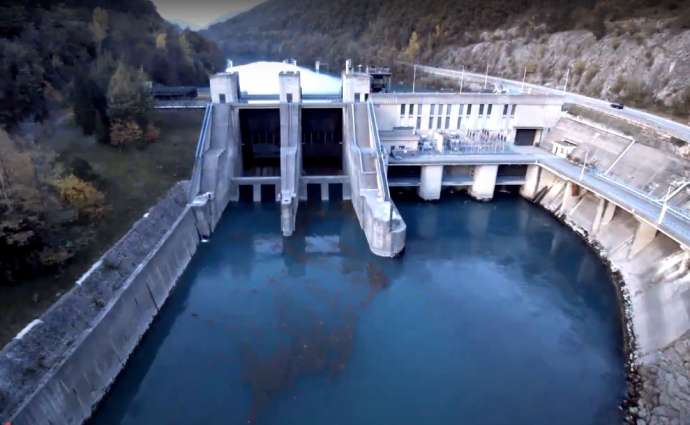STA, 28 July 2022 - The Solkan Hydropower Plant has been temporarily shut down due to extremely low flow of the Soča river caused by prolonged drought, its operator, Soške Elektrarne Nova Gorica, has announced. This is the first time the Solkan plant has been non-operational since 2003.
Currently, the average flow of the river in Solkan is so low that it does not allow for the turbines to operate safely, explained the hydropower company.
The ecologically acceptable flow is ensured by guiding the water over the gates of the dam and is equal to the natural inflow of the Soča river.
Up until Wednesday, a slightly higher-than-natural flow was ensured by emptying the reservoirs.
However, reservoir levels on the Soča have reached critical levels that no longer allow for them to be emptied, the company added.
Primorski Dnevnik meanwhile reported that Stefano Zannier, the agriculture minister of the bordering Friuli Venezia Giulia region in Italy had urged the Italian government to contact the Slovenian government to see whether it was possible to increase the river flow at the Solkan dam.
The newspaper of the Slovenian minority in Italy added that, according to the hydropower plant operator, this will most likely not be possible.
Right after the turbines at Solkan stopped, the water level of the Soča in Nova Gorica started dropping, most noticeably near Ločnik where larger amounts of water are redirected to the Fara channel.
As a result, fish have started gathering in large pools near Gorizia and Sant'Andrea in Italy, the minority newspaper reported.
The local land reclamation consortium also noted the diminished water flow on Wednesday, and acted accordingly, managing to prevent a massive fish die-off by reducing the flow to all irrigation canals and shutting down all irrigation devices.
The situation is also being closely monitored by the regional fisheries institute in Friuli Venezia Giulia. It has also ensured that fish from the driest parts of the Soča river were transferred to safety, Primorski Dnevnik noted.
The Slovenian newspaper Primorske Novice also reported that the flow on the part of the Soča waterbed between Savogna and Sagrado, south-west of Gorizia had completely stopped in what is an exceptionally rare occurrence.
The 5-kilometre strip now only has pools of waters where fish are seeking refuge, and a similar situation has developed at the confluence of the Soča and Vipava rivers, the newspaper notes.
The average flow of the Soča in the first half of the year was 39 cubic metres per second, half the usual.
The power utility Holding Slovenske Elektrarne (HSE) said that SENG had realised only 54% of the planned output for the first half of the year, and that the situation was similar when it comes to the power plants on the Drava and Sava rivers.
Compared to the five-year average, electricity production is down by 31% on the Drava, by 45% on the Soča, and by 39% on the lower section of the Sava.
HSE is well-equipped to deal with dry spells, the company told the STA, adding that the plan was to deal with energy shortages by acquiring electricity on foreign markets and restructuring production in their hydropower plants.
However, due to the instability of the energy market, the drought has had a negative impact on HSE's operations.







